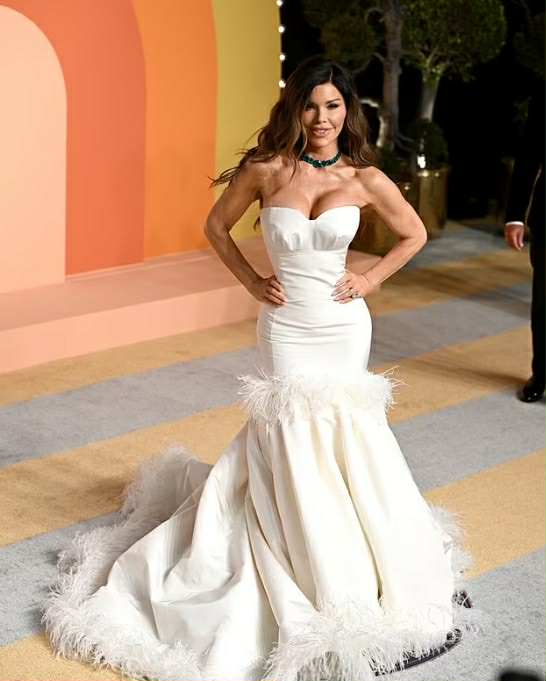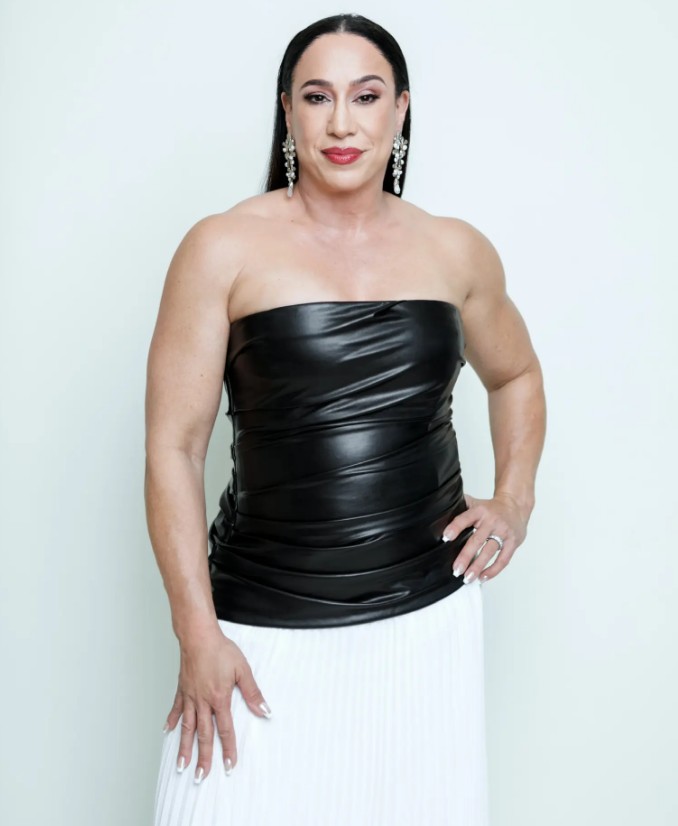Lauren Sanchez Bezos, wife of billionaire Jeff Bezos, confidently displayed her toned arms while strolling in Venice. A human resources director stood out from the crowd at a Coldplay concert thanks to her sculpted arms. From red carpets to Instagram, from billboards to images of tennis legend Serena Williams after losing more than 13 kg, muscular arms are everywhere, becoming a new status symbol.
The rise of toned arms isn't a fleeting trend. According to a study by the Health and Fitness Association, the percentage of women lifting weights has increased significantly, from 11% in 2019 to 14% in 2024. Many gym chains like Crunch and Life Time are removing cardio machines to prioritize space for free weights, largely to meet the growing demand from female clients. Some women even wear weighted, camouflage backpacks while walking their pets, while emerging brands like The Carry and Yvoty have launched more stylish designs to appeal to women.
 |
Lauren Sanchez at the Vanity Fair Oscar party in 3/2025. Photo: PA Wires |
Lauren Sanchez at the Vanity Fair Oscar party in 3/2025. Photo: PA Wires
Even the $17 billion menopause industry is actively promoting weight training as an effective way to prevent muscle loss and osteoporosis. Joanna Strober, CEO of telehealth company Midi Health, said, "The perception has changed. As you age, being thin is more detrimental than being strong. People are worried about their bones and don't want to become frail and hunched over.".
Toned arms have become a symbol of power, representing strength, discipline, and a quiet cultural revolution. In his 2023 book *Outlive*, author Peter Attia takes the concept of "muscle" out of the realm of geriatric medicine and makes it a matter of survival. He argues that strength isn't just for looking good; it's a tool for longevity. This view initially attracted the male bio-hacking community but is now spreading to elite women.
Lynn Jurich, former CEO and co-founder of Sunrun, now runs a high-end women's club in Silicon Valley called the Women’s Longevity Institute, with a $10,000 annual membership fee. Weight training is central to the program. "I've seen my friends, female vice presidents and CEOs, go through difficult perimenopause," Jurich said. "They lost confidence, left their careers, and even got divorced. One of our goals is to help women regain their strength and power.".
Holly Rilinger, owner of Lifted Method, a gym with 300 women attending weekly weightlifting classes, also sees her clients seeking something money can't buy: muscle. "They want strength to be a symbol of hard work," she said. "Women want stronger, more toned arms.".
For much of the last century, slender arms were the ideal. However, social media and the new wave of "fitfluencers" have changed that perception. Strength used to be a simple concept: you lift weights, you get stronger. But Dany Garcia, a former professional bodybuilder and founder of media company Danimas, argues that what's being sold to women now isn't real strength but "the illusion of it" – muscle as a physical accessory achieved through fat loss.
"When you're thin, your muscles show," Garcia said. "But thin doesn't mean strong.".
This contradiction is most evident in the arms, a body part that has become a "billboard" for cultural messages. Once overlooked, arms are now loaded with meaning amid the burgeoning women's sports movement and the loss of abortion rights in some places. "When you feel your rights are being taken away, a part of you wants to become really strong in response," Garcia said. Arms have become a symbol of female discipline, control, and resistance.
 |
Dany Garcia, founder of Danimas, a new media company focused on female strength. Photo: Kel Aranas |
Dany Garcia, founder of Danimas, a new media company focused on female strength. Photo: Kel Aranas
However, some experts believe this is just another race to perfection. Psychology professor Renee Engeln of Northwestern University said, "The nature of beauty ideals is that they must be difficult to achieve. Thin isn't enough; now you have to be both thin and muscular." She argues that instead of being empowering, this standard is another way for women to never feel satisfied with their bodies. Research by psychologist Brooke Whisenhunt of Missouri State University shows that Miss America contestants from 1999 to 2013 became increasingly thinner and more muscular.
Even this muscular aesthetic has its own rules. Arms must be defined but not bulky, strong but still "feminine." Achieving this delicate balance between muscle and fat requires money, personal trainers, nutritionists, and a lot of time. "Besides genetics," Engeln emphasized, "never forget that the most important 'ingredient' for an ideal body is wealth. Wealth buys you healthy food, time, and the resources to turn exercise into an unpaid part-time job.".
Therefore, toned arms are not just a sign of strength but also a testament to privilege. Gunnar Peterson, a celebrity trainer who charges $350 an hour, said, "My female clients don't say 'I want big arms' but 'I want more definition.' The common areas women focus on in my gym are always glutes, abs, and arms. But lately, arms have been the main focus.".
Binh Minh (Time)












